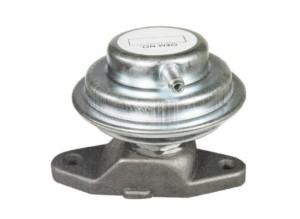The EGR (Exhaust Gas Recirculation) valve plays a crucial role in reducing harmful emissions and improving engine performance. When it malfunctions, it can lead to a range of problems. This guide will delve into the common Egr Valve Failure Symptoms, helping you diagnose potential issues and take timely action.
 EGR Valve
EGR Valve
Recognizing the Signs of a Failing EGR Valve
A faulty EGR valve can manifest in various ways, impacting your vehicle’s drivability and efficiency. Here are some key symptoms to watch out for:
Performance Issues
- Rough Idle: A malfunctioning EGR valve can disrupt the engine’s idle speed, causing it to fluctuate or stumble.
- Hesitation and Stalling: You might experience hesitation or stalling, particularly when accelerating or at low speeds.
- Reduced Power and Acceleration: A faulty EGR valve can restrict airflow, leading to a noticeable decrease in engine power and sluggish acceleration.
Engine Noise
- Knocking or Pinging: Increased combustion temperatures due to a malfunctioning EGR valve can cause knocking or pinging sounds from the engine.
Emissions Problems
- Increased Emissions: A failing EGR valve can lead to higher levels of harmful NOx emissions.
- Failed Emissions Test: A faulty EGR valve is a common cause of failed emissions tests.
Warning Signs
- Check Engine Light: The illumination of the check engine light is often the first indication of an EGR valve problem. A diagnostic scan can reveal specific error codes related to the EGR system.
- Poor Fuel Economy: A malfunctioning EGR valve can disrupt the air-fuel mixture, resulting in decreased fuel efficiency.
Other Potential Indicators
While less common, the following symptoms can also indicate a potential EGR valve issue:
- Strong Fuel Odor: Raw fuel smell may indicate a problem with the EGR system.
- Black Smoke from Exhaust: Black smoke can be a sign of incomplete combustion, potentially related to a faulty EGR valve.
Causes of EGR Valve Failure
Several factors can contribute to EGR valve failure:
Carbon Buildup
Over time, carbon deposits can accumulate within the EGR valve and passages, hindering its operation.
Faulty EGR Components
Issues with related components, such as the EGR solenoid or vacuum lines, can also cause problems.
Extreme Operating Conditions
Exposure to high temperatures and heavy loads can accelerate wear and tear on the EGR valve.
Conclusion
Recognizing the symptoms of EGR valve failure is crucial for maintaining your vehicle’s performance and minimizing harmful emissions. If you experience any of the symptoms mentioned above, it’s essential to have your vehicle inspected by a qualified mechanic. Addressing the issue promptly can prevent further damage and ensure your vehicle runs smoothly and efficiently.
